Part of the historical garden
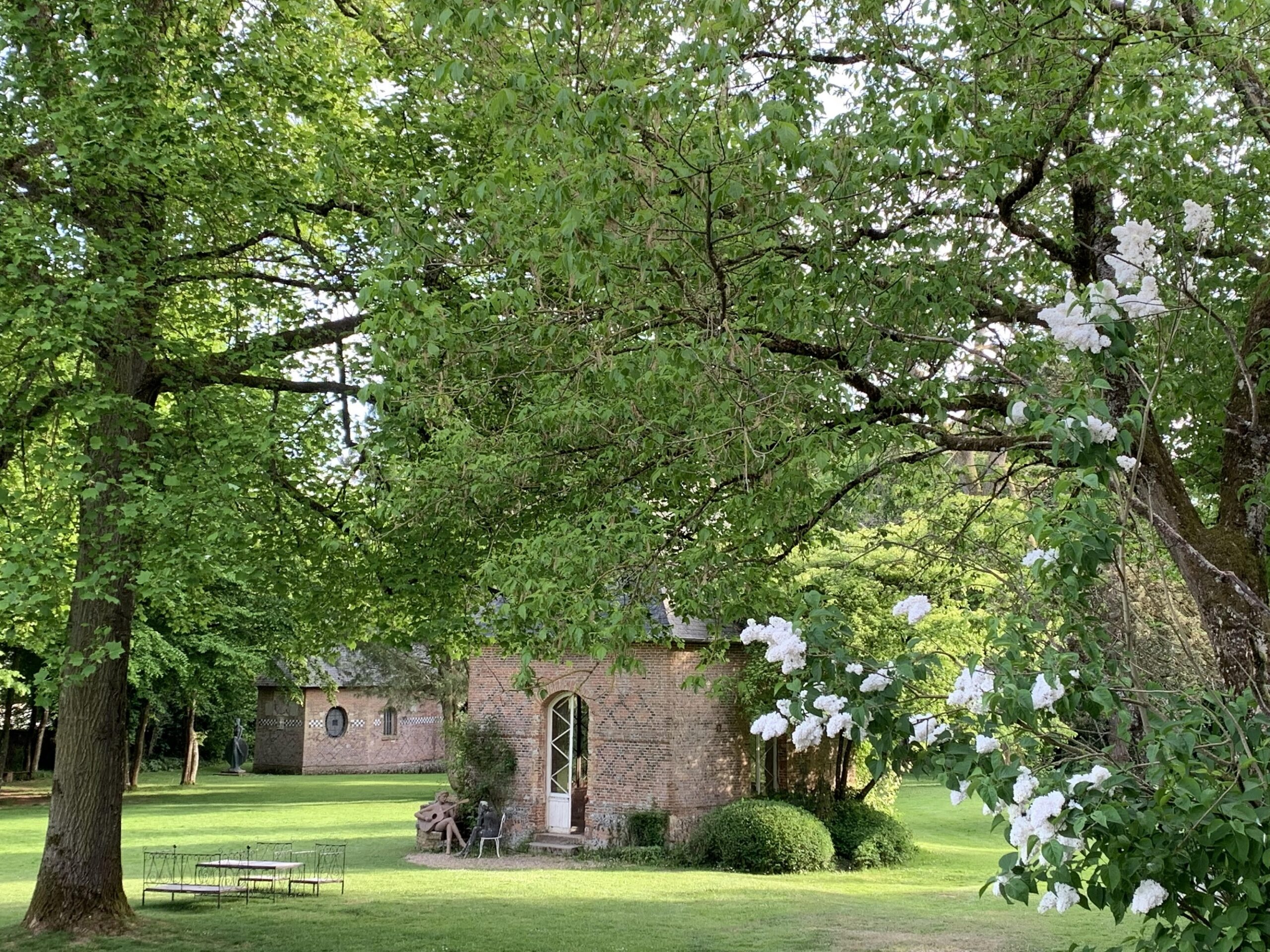
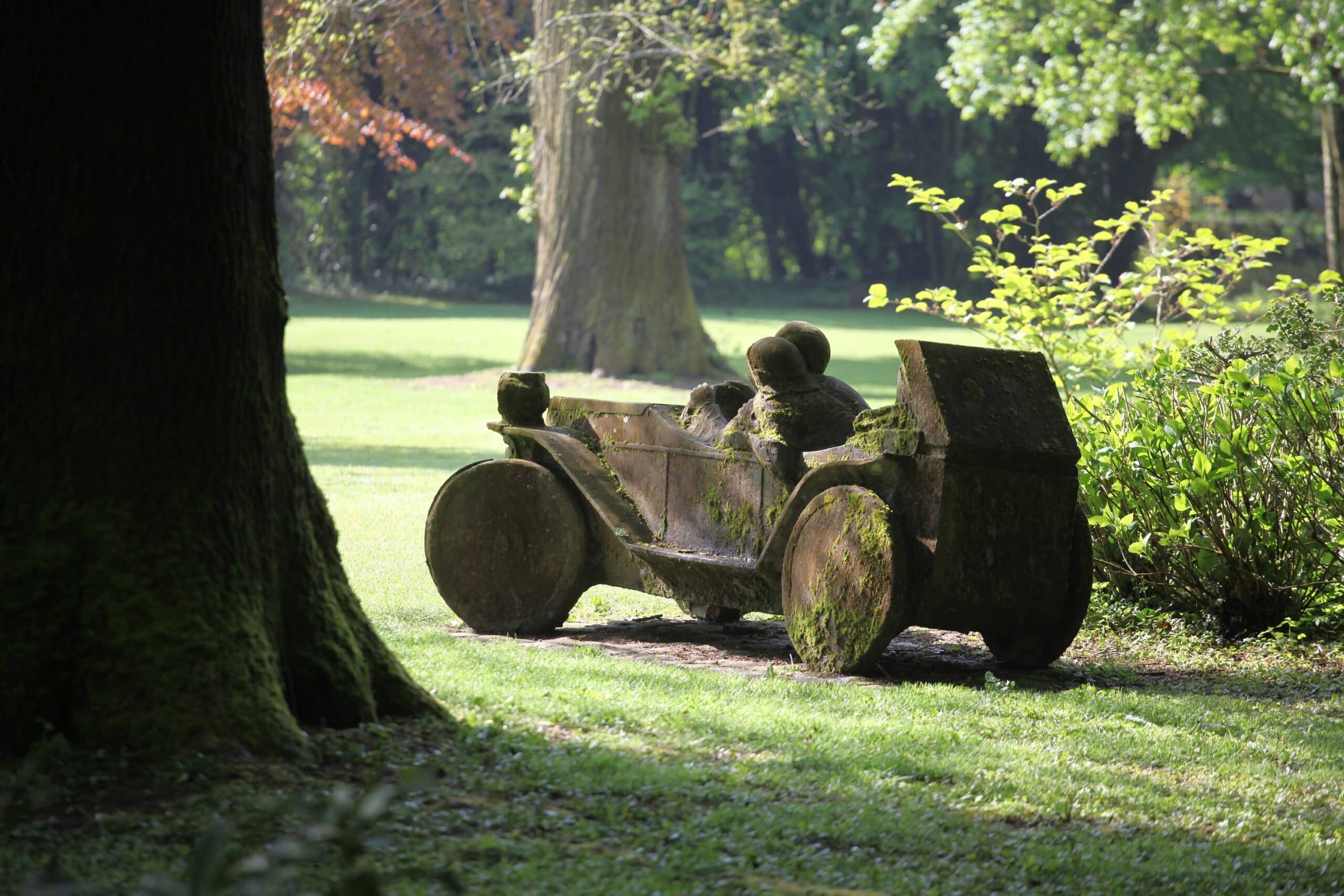
By receiving this maternal land at the age of 21, Jean-Marc de Pas received the family house where he grew up with his six older brothers and sisters, surrounded by ponies, at the foot of the large trees.
While studying arts and art sciences, he dreamed of a vast space of poetry, to celebrate this Mother Earth, through his emerging passion, sculpture. He made the plans in 1985 and ensured 7 to 10,000 plantations over 7 hectares. Traditional perspectives highlight the house, while a garden is born under the pencil strokes of a young artist moving towards sculpture, at the Ecole Boulle and the Beaux-Arts, after training in cabinetmaking. The buildings are highlighted with boxwood hedges. Members of the family welcome us… A tribute to a direct ancestor Pierre Le Pesant de Boisguilbert (1646-1714), illustrious founding economist and to his cousins Pierre and Thomas Corneille and Bernard de Fontenelle, a charming scene Etienne and Christine d’Arboval aboard the Pégase grandfather’s eponymous invention, under the gaze of Grand’Pa, seated in his armchair.
The pond and its island
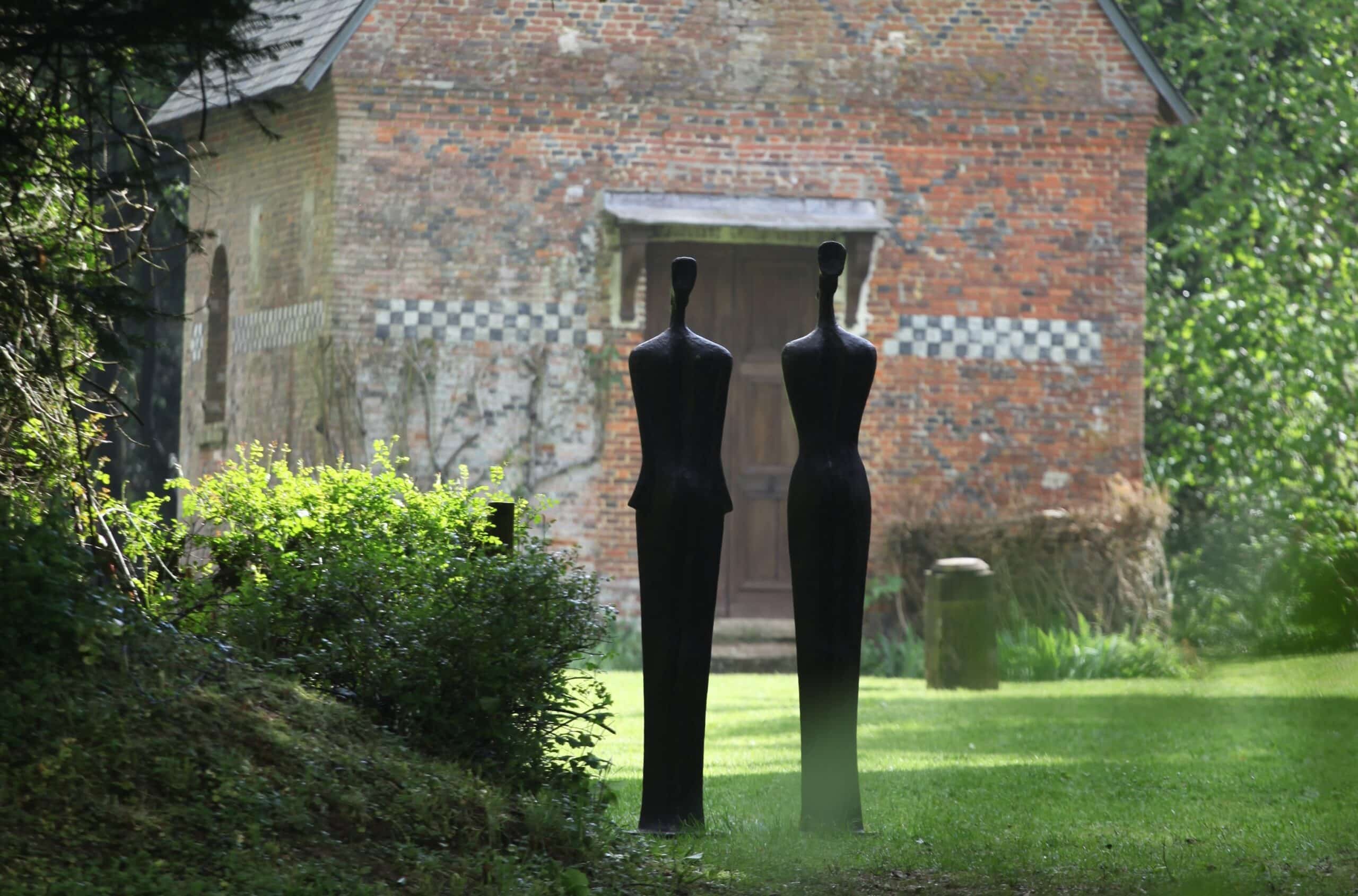

Positioned at the entrance to the pond, the Guardians open the promenade of the symbolic Garden, a hymn to Nature. The pond represents the original water, source of life. The island emerges at its center as Earth, mother of all forms. Within it is a cave, the belly of the maternal Earth. At the top of the island, the Winged Woman stands, symbol of Life, of the flight of forms.
The Ifs Circle
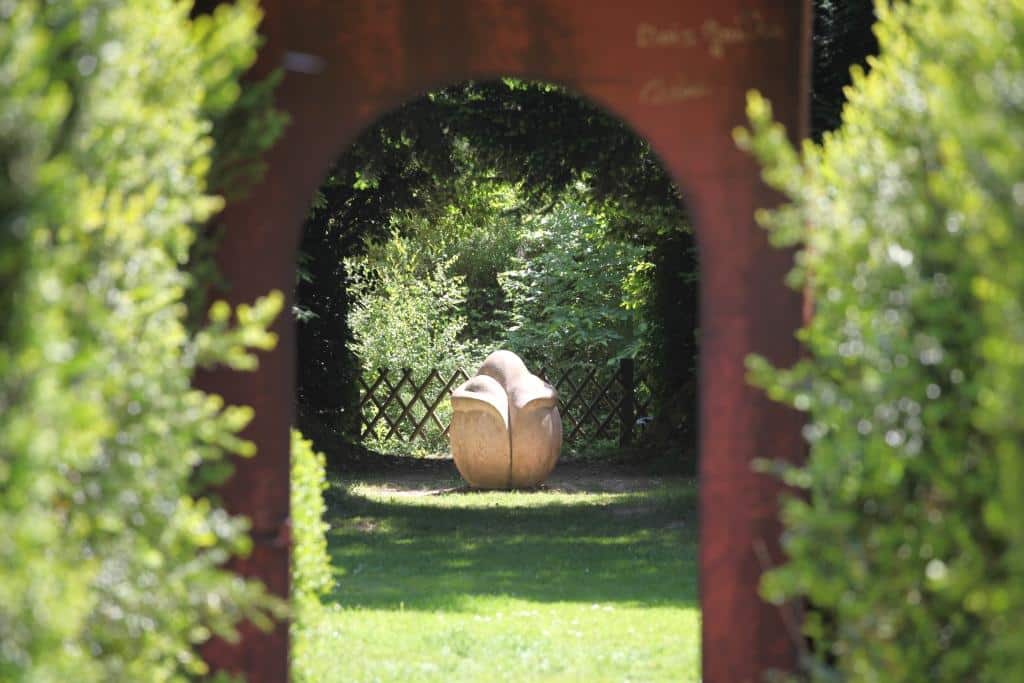
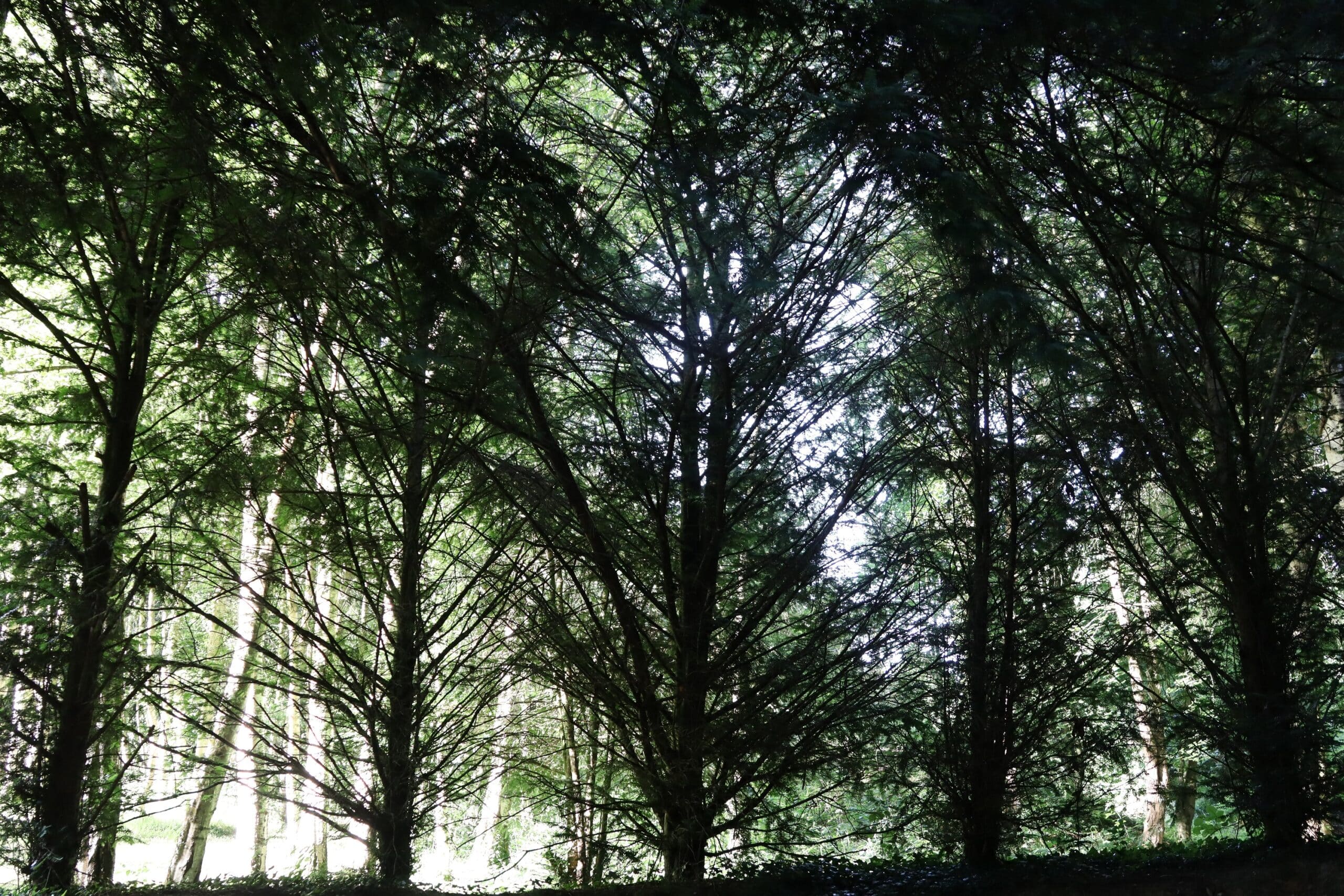
Then, advancing towards the labyrinth, we enter under a delicate veil of needles, the Circle of Yews. Planted in 1989, fourteen yew trees symbolizing longevity surround the sculpture of the Ball Man. The latter embodies the birth of forms, like a seed, and its advent into the light. The yew dome protects it and lets the sun’s rays penetrate the intimacy of the circle.
The labyrinth, garden of the cosmos
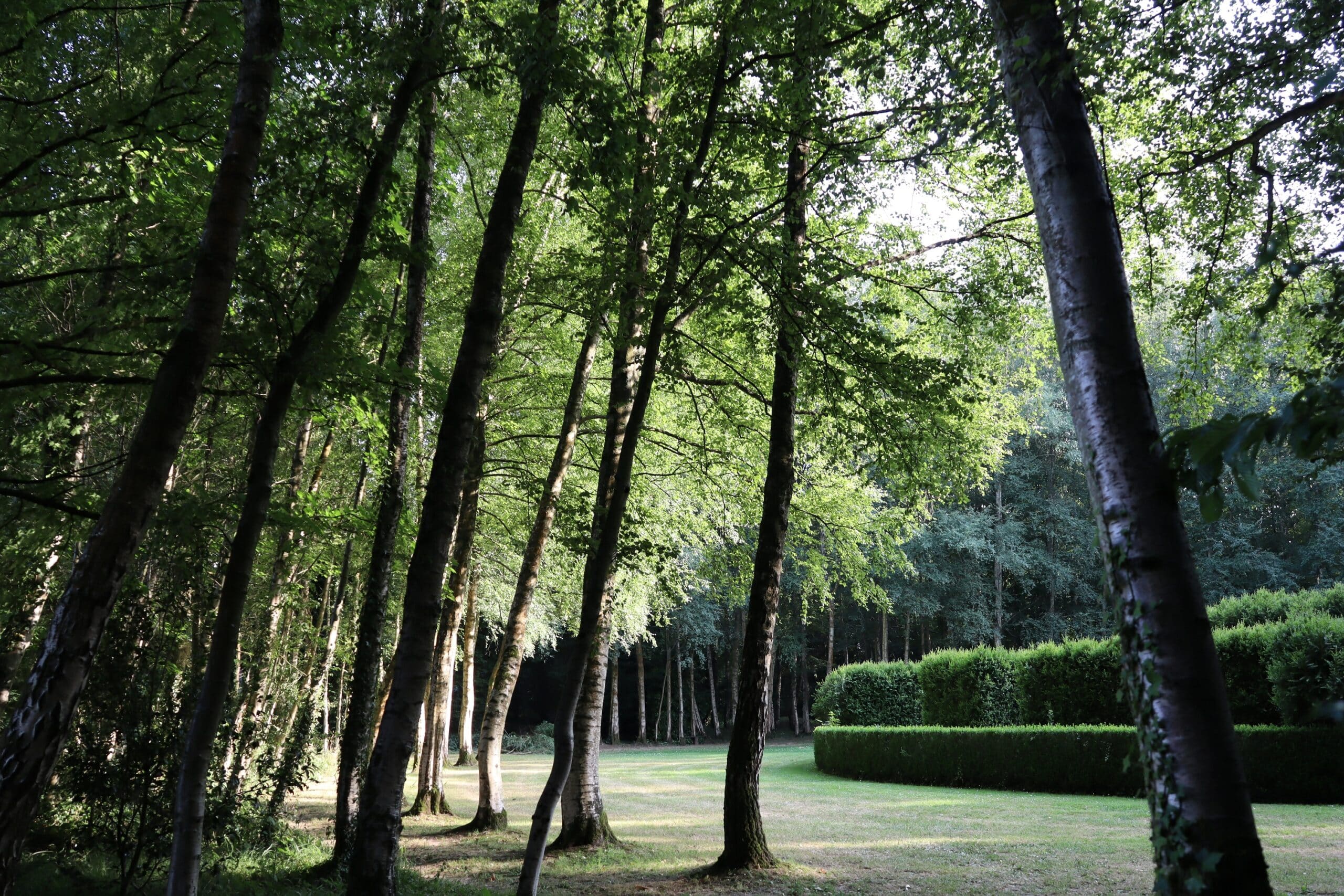

At the heart of the park, the circular space formed by the maze of boxwood and the circle of birches connects us to the cosmos. The landscape artist planted 300 feet of boxwood in 1989 and the circle of birch trees in 1991. The labyrinth is actually in the shape of a mandala. Taken to its center, we are invited to lie down and contemplate the celestial vault, before returning to the outside through the steel door and its latch in the shape of a shooting star. Labyrinth of thoughts, of introspection, the Jardin du cosmos connects the inner infinity and the infinity of the cosmos. From this central point, different paths then lead to the other spaces of the garden.
The Great Ring Road

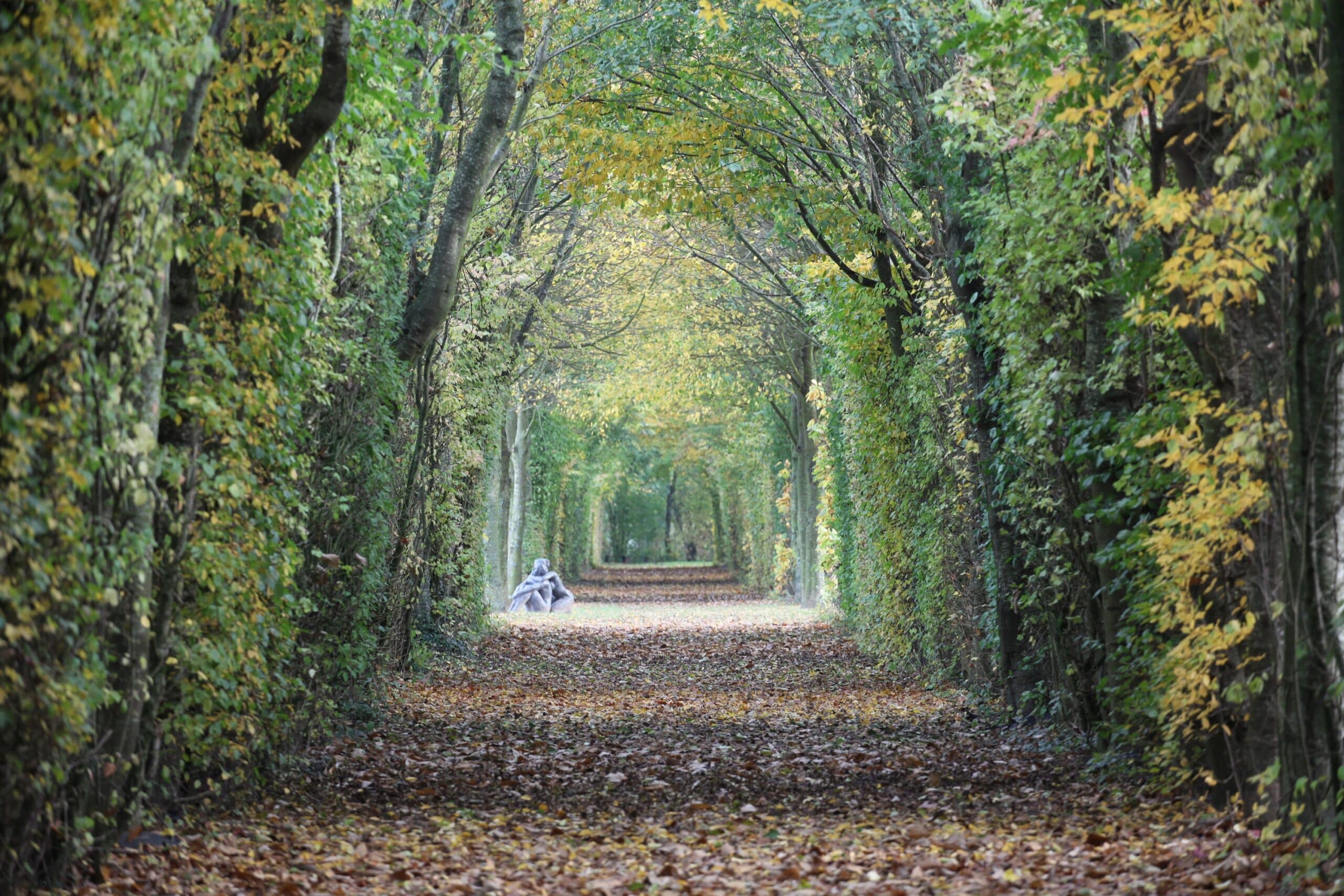
The first passage traced within the circle of birches opens a path to the wolf pond, and the large peripheral alley. At the entrance to the alley, an educational space hosts ecological niches, insect huts and compost to raise awareness of the elements that promote life cycles. The large peripheral alley borders the garden like a living frame. It opens here on the passage, offers there its corridors and balconies. A real home for birds, its 12 species making up its 800 meters of hedge, protects the soil and the garden from the winds.
Women from the five continents
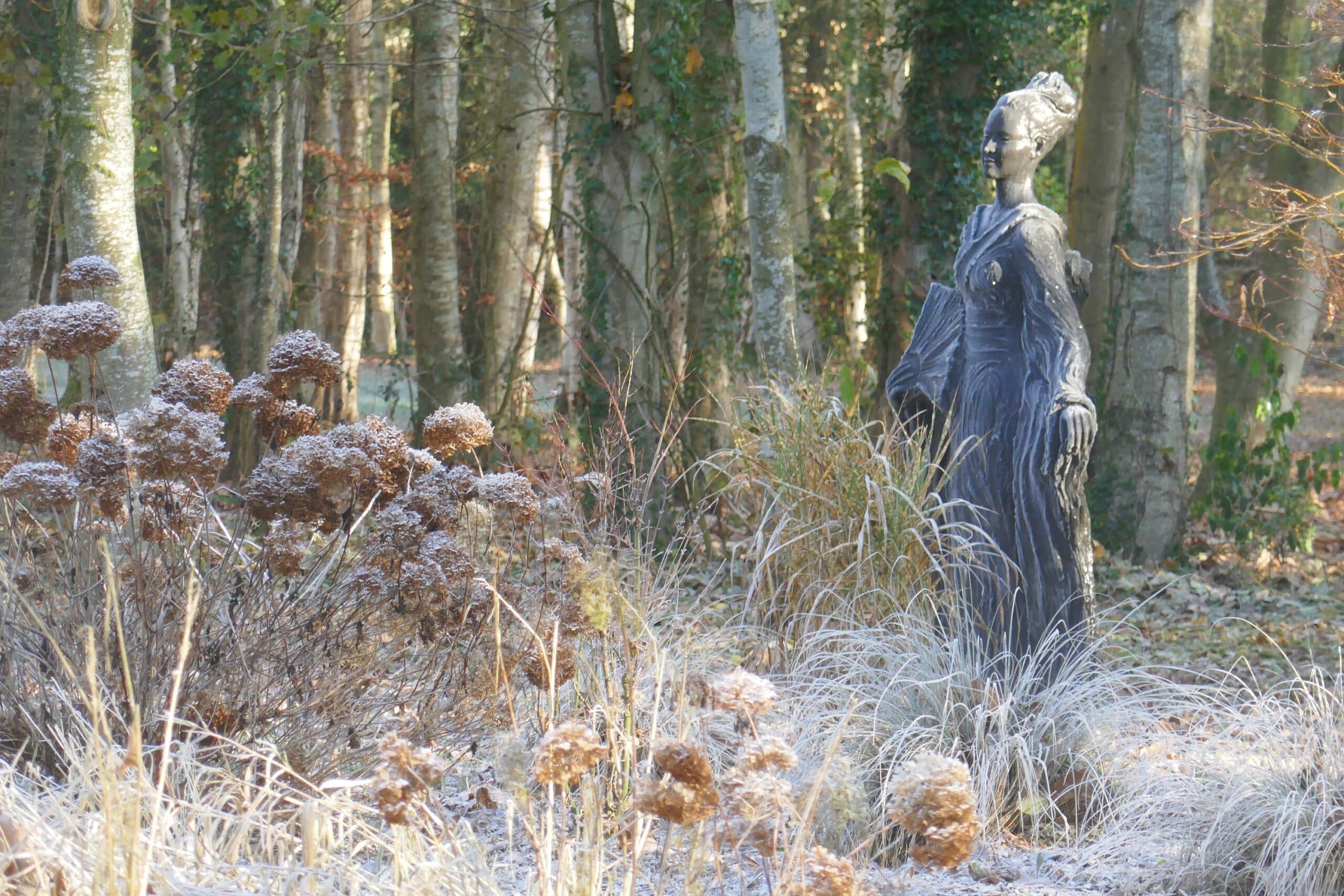
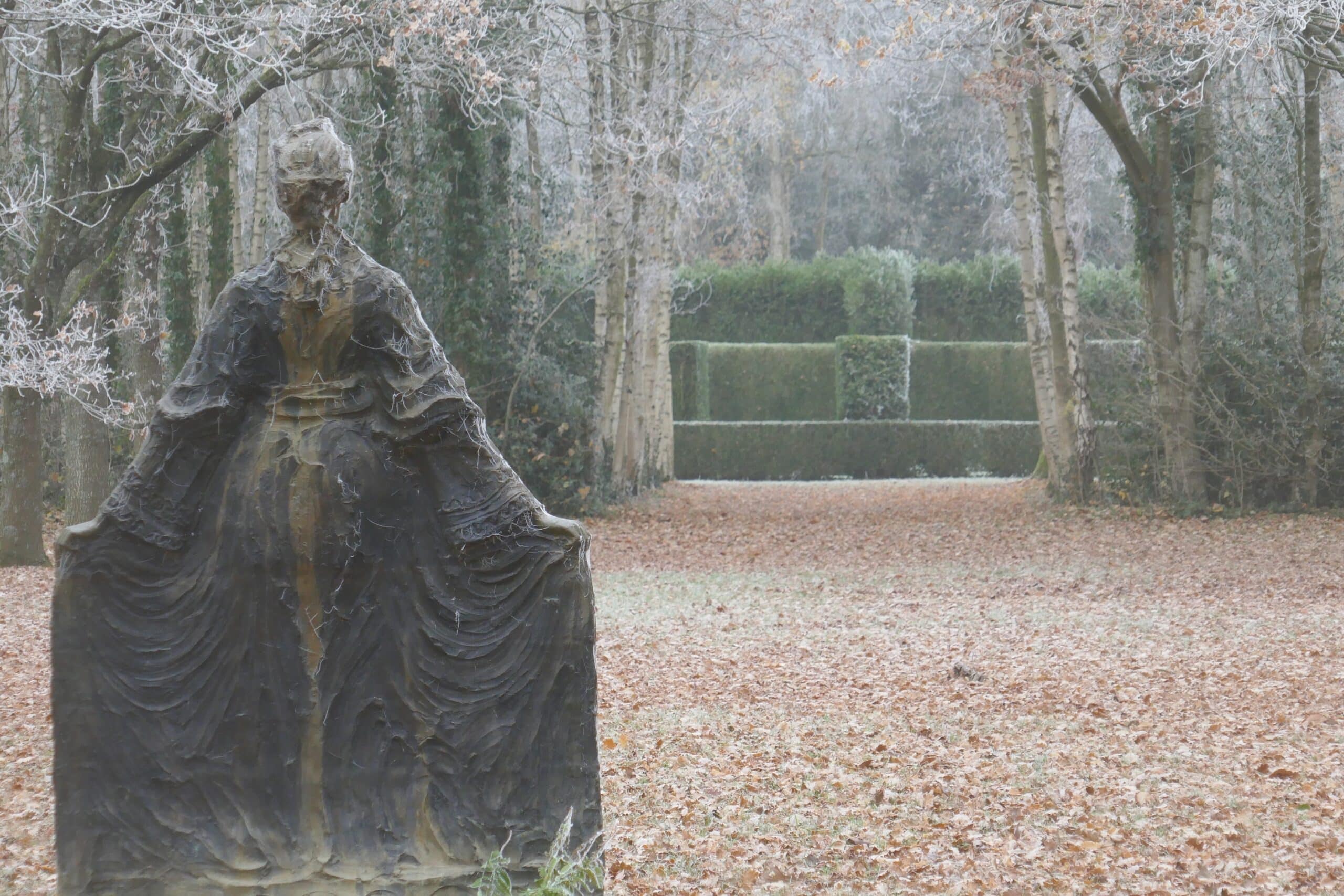
The second passage between the birches leads to the space of Women of the Five Continents. The path leads to an avenue of oak trees planted in 1992. In front of us, The African Woman, created in 2000. Asia, America, Oceania and Europe were also personified, created in public during the Rouen Armada in 2008. Presented in majesty in the face of Gaia, these women evoke the continents. They are installed on the edge of an avenue of chestnut trees in an arc symbolizing the Earth. Pathways and cone-shaped perennial beds highlight the works, exuding grace and serenity.
Gaïa
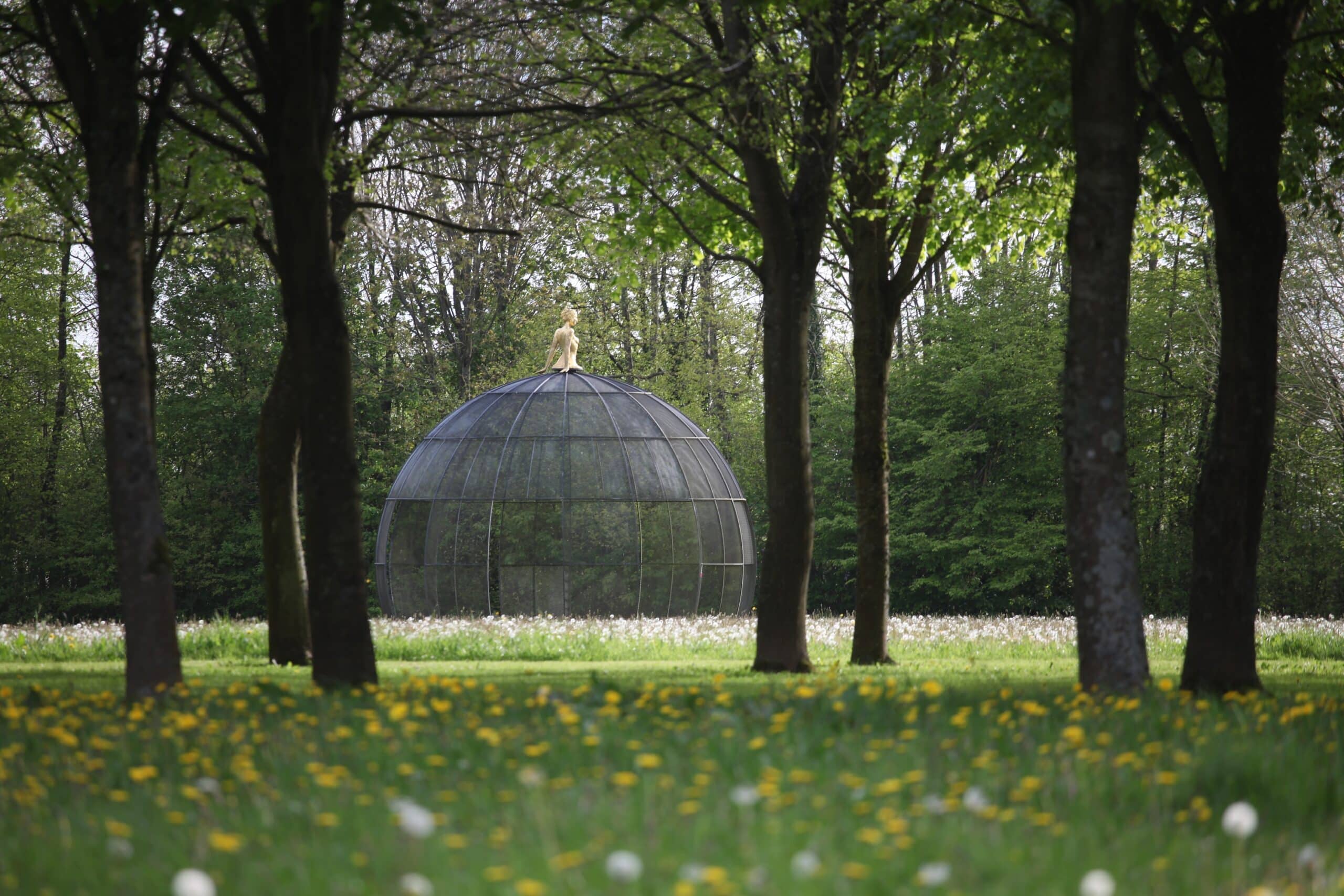
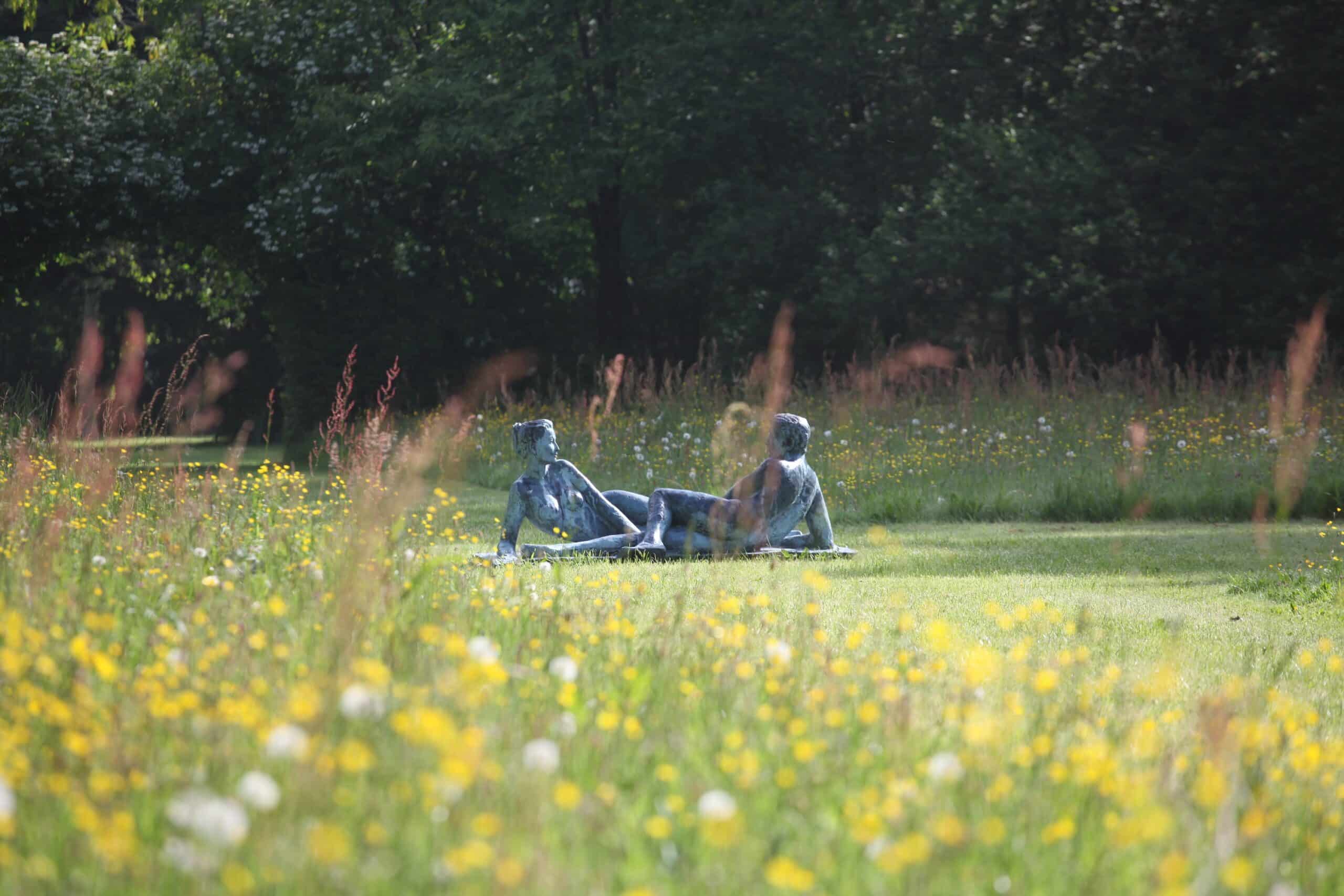
Gaia walking towards the setting sun receives its last rays. His bust is gilded with gold leaf, connected to the sun. The sculpture bears the ancient name of the Earth, represented by a steel robe in the shape of a globe. The horizontal and vertical lines then recall the parallels and meridians of the blue planet. The other aerial planets will complete the picture. Further on, on the path drawn between the tall grass, The Walking Woman and The Lying Couple embellish these open spaces.
Solar space
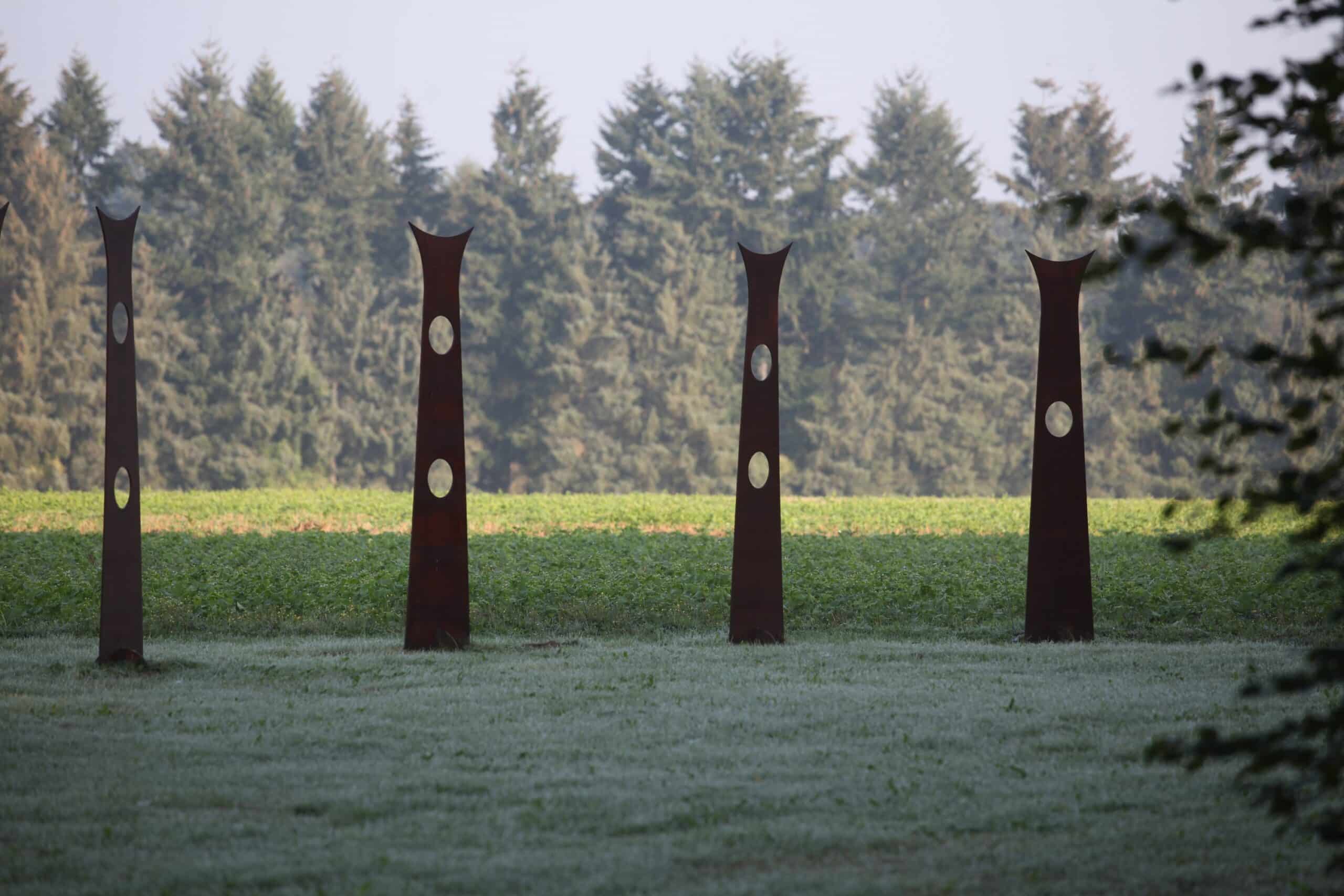
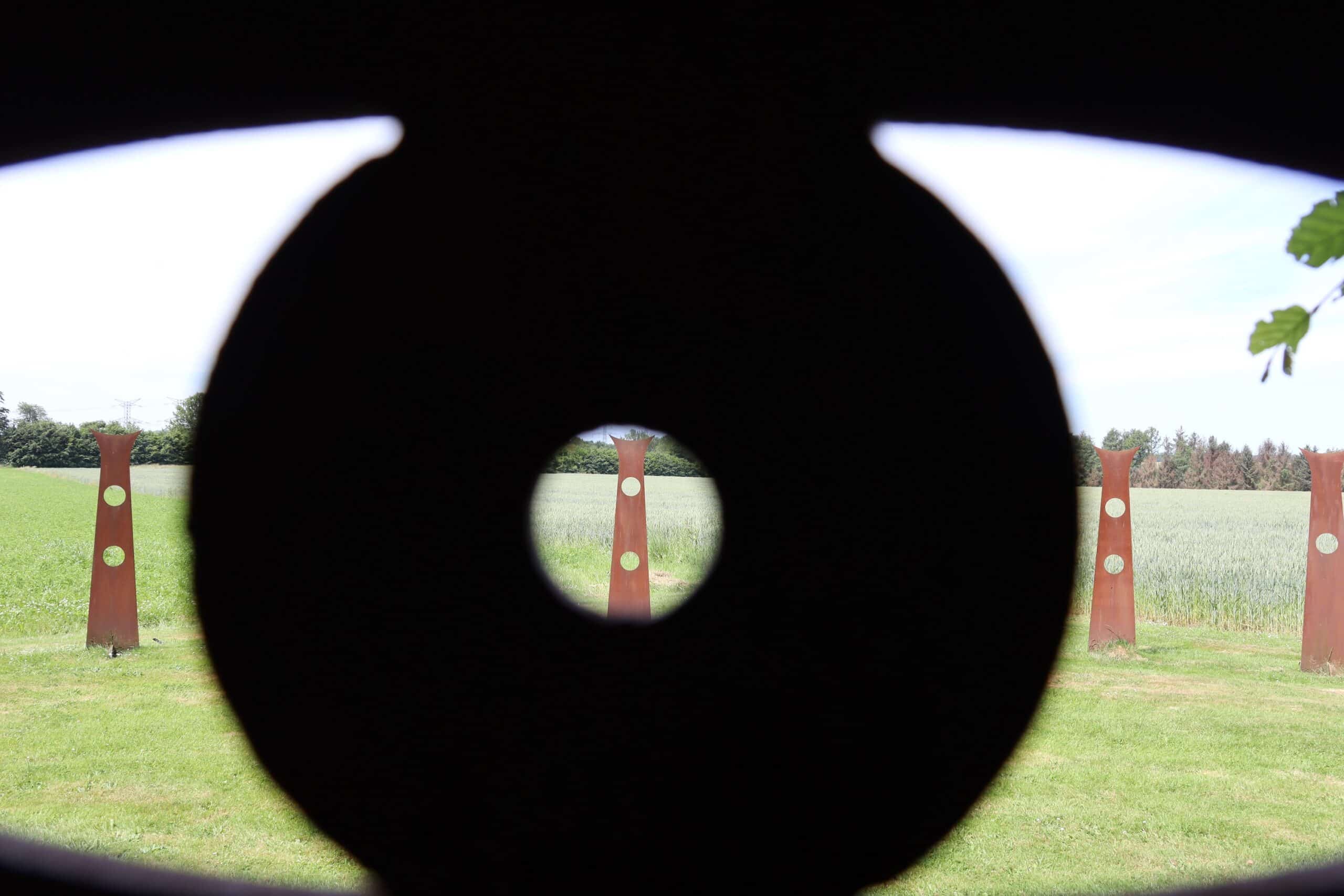
By following Gaia’s gaze, the walker discovers a dark avenue of holly, at the corner of the peripheral avenue due west, opening onto a vast plain and a sundial: benches in the shape of a moon, with an eye on the armchair central, and seven elevated elements, mark the rhythm of the year when solstices, equinoxes and solar months come, forming an alignment in the evening between the eye and the setting sun on the horizon line above the elements.
The Dawn and the Twilight
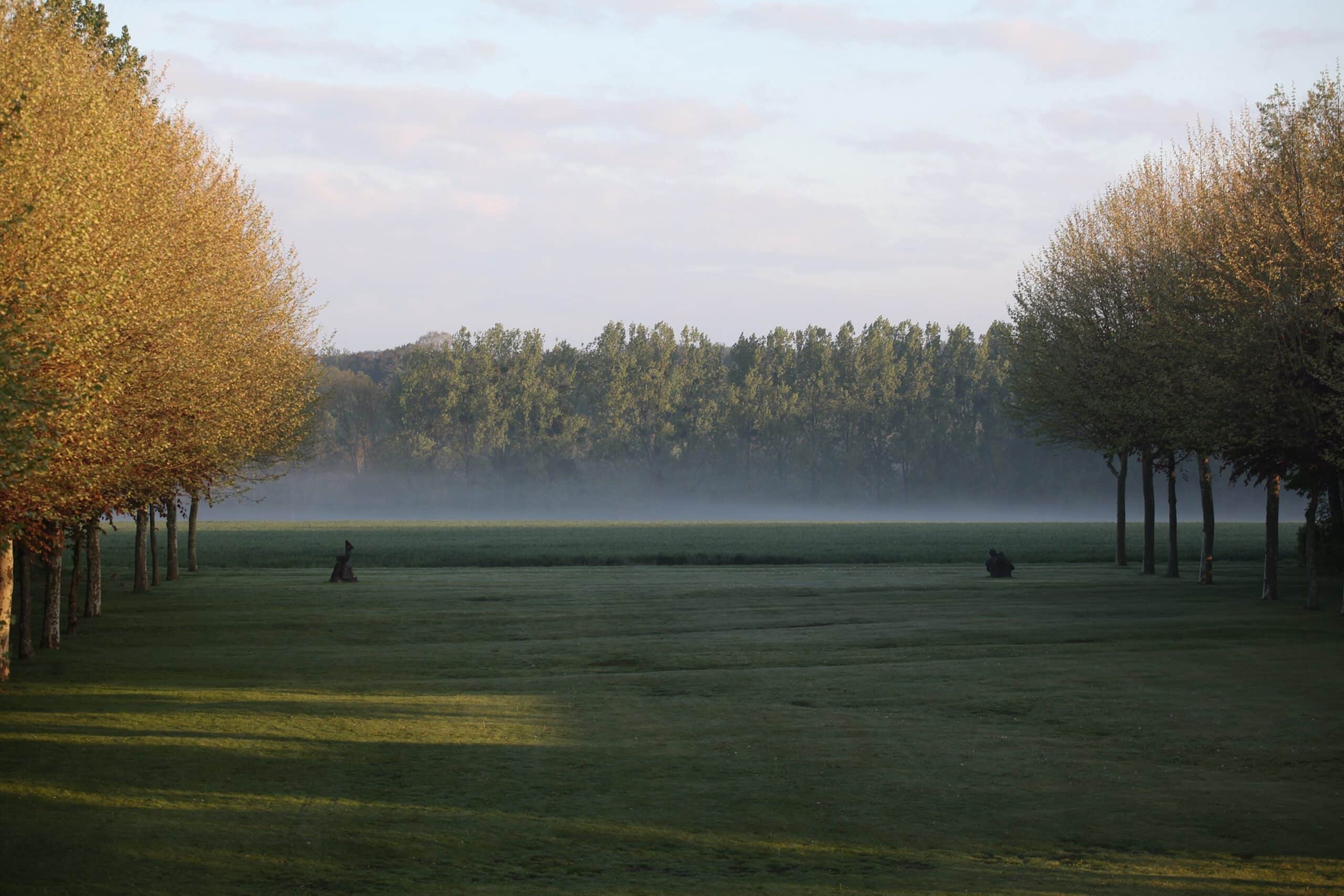
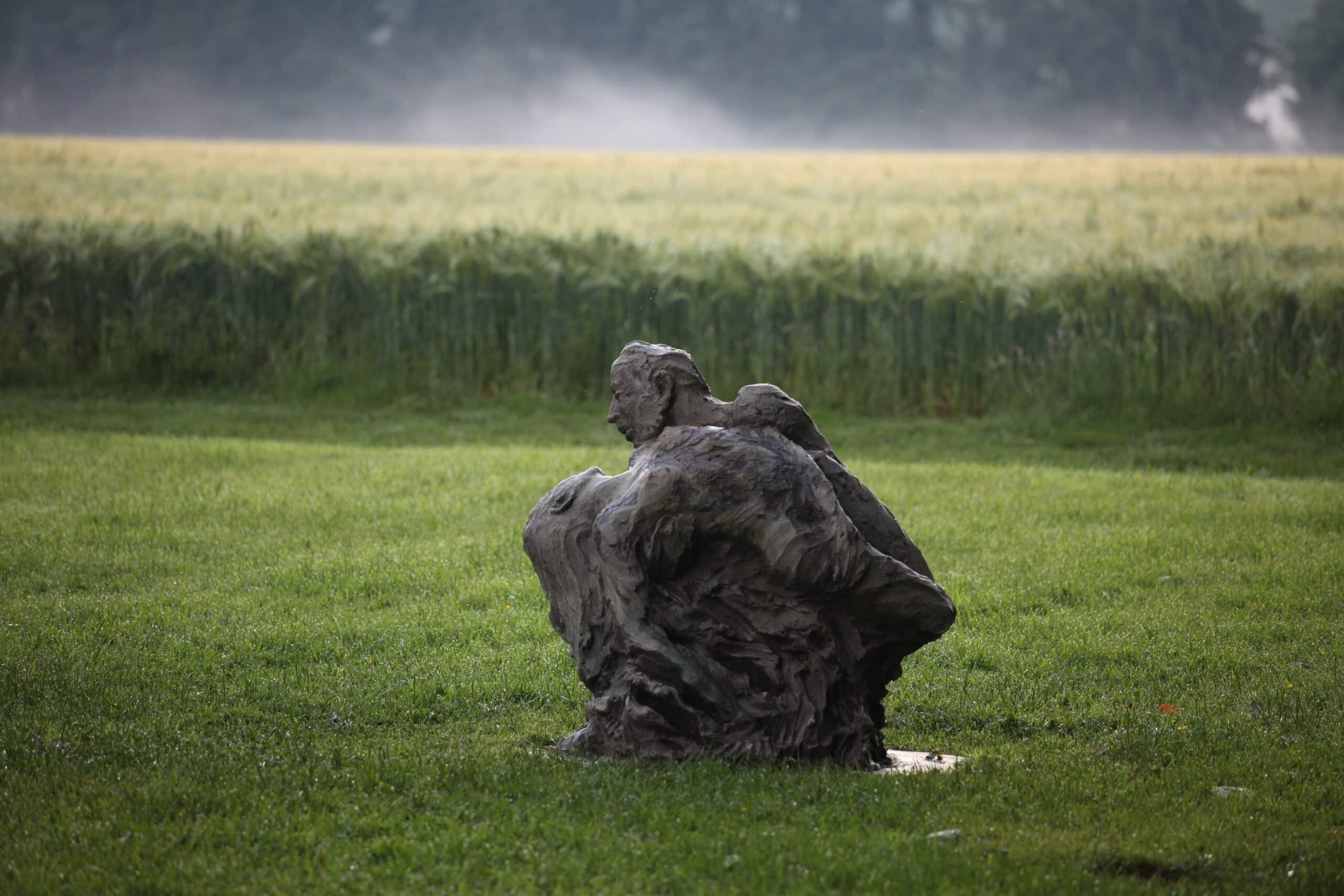
At the back of the castle, two works highlight the perspective, Dawn and Twilight. Before that, announcing the future “Exchequer”, the Bateleur cheerfully welcomes us with his drum and his attire worthy of court entertainers. A long lawn extends from the castle, dotted with plane trees and purple beeches. A space is dedicated to Antoine de Saint-Exupéry, represented walking, in aviator outfit, with his head in the stars, near the asteroids nestled in the alcoves: the King, the Businessman, the Drinker, the Conceited, the Lamplighter, the Geographer, and soon that of the Little Prince. Dawn and dusk evoke the passage of time on the scale of a day. The woman wakes up looking up; in the evening, it fades into the sunset, in the arms of Chronos, Time.
The cloister of the four seasons


The cloister of the four seasons was planted with hornbeams in 1995. This very designed space celebrates the passage of time on the scale of a year. Four women embody the seasons. The woman in the east symbolizes the awakening Spring. In the south, Summer celebrates the sun at its zenith. In the evening at sunset, Autumn is represented in an attitude of contemplation; finally the night in the north is symbolized by Winter, warmly dressed, warming her hands.
The Garden of the Four Elements
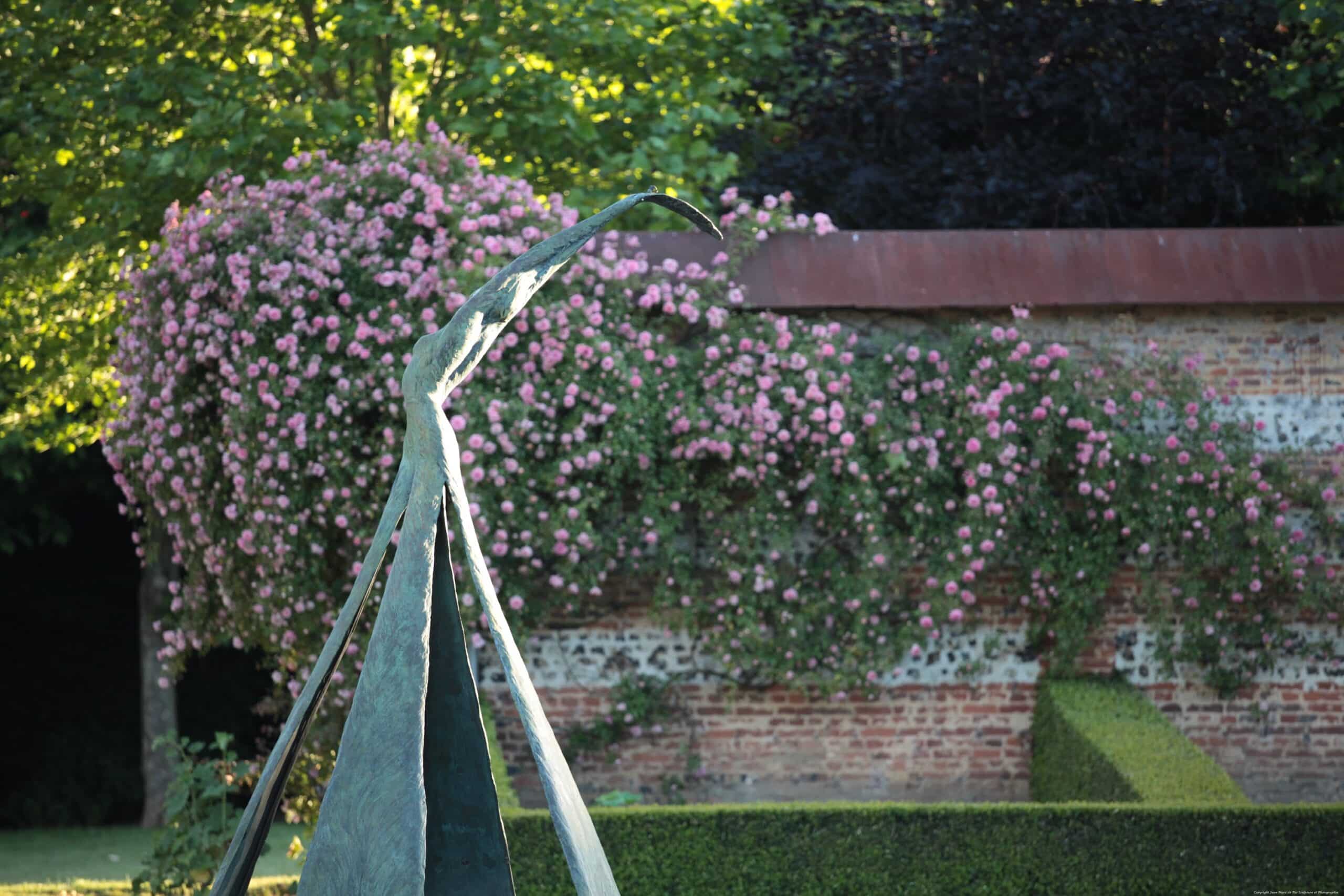
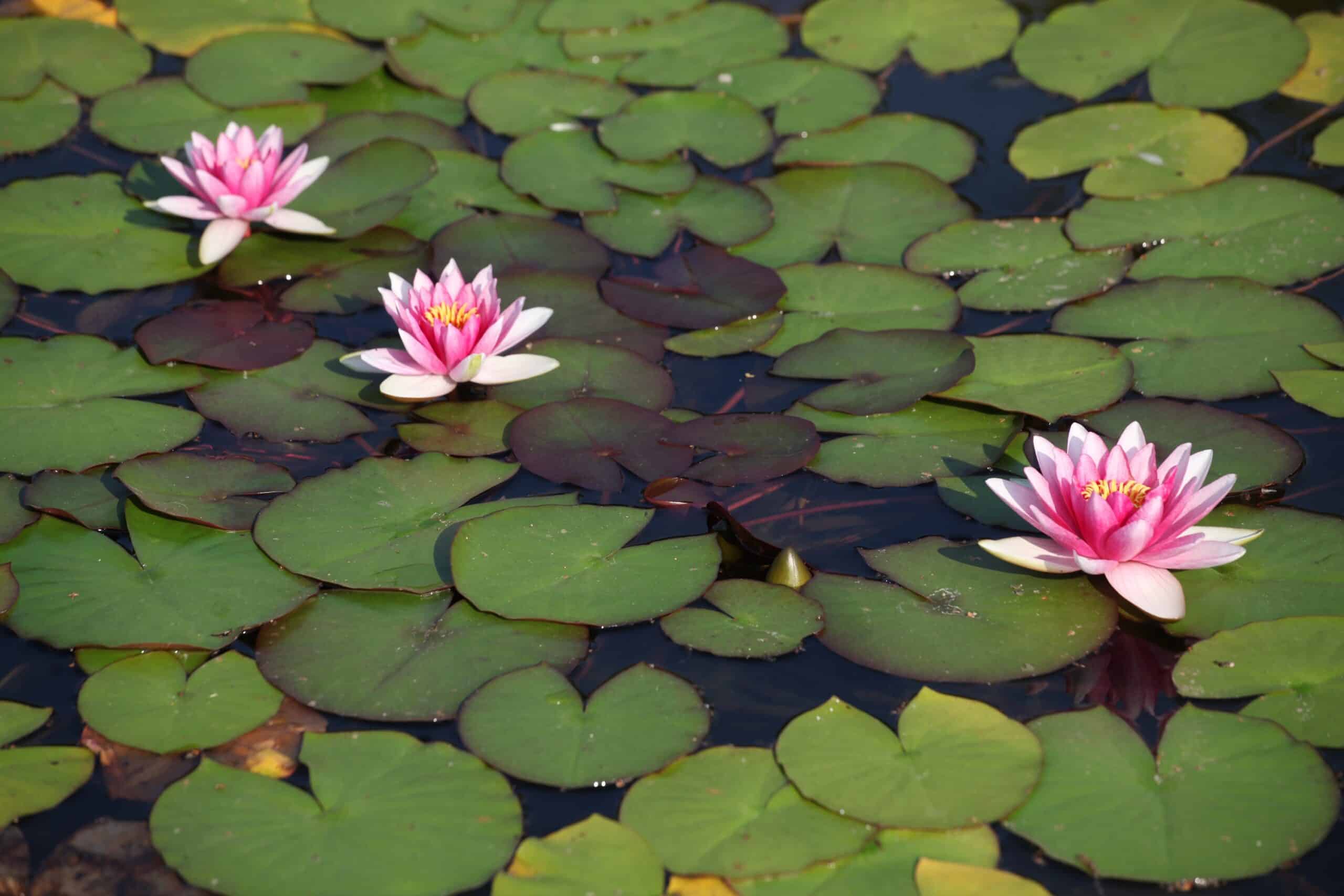
Next comes the Garden of the Elements. Four lawns materialize Water, Earth, Air and Fire. The water circle realizes their union, taking a fraction of each element. In the center of the basin, a sculpture with feminine shapes, stretched in an arc in space, springs from the four elements. On his feet, the elements are evoked in bas-relief.
The Redwood Circle
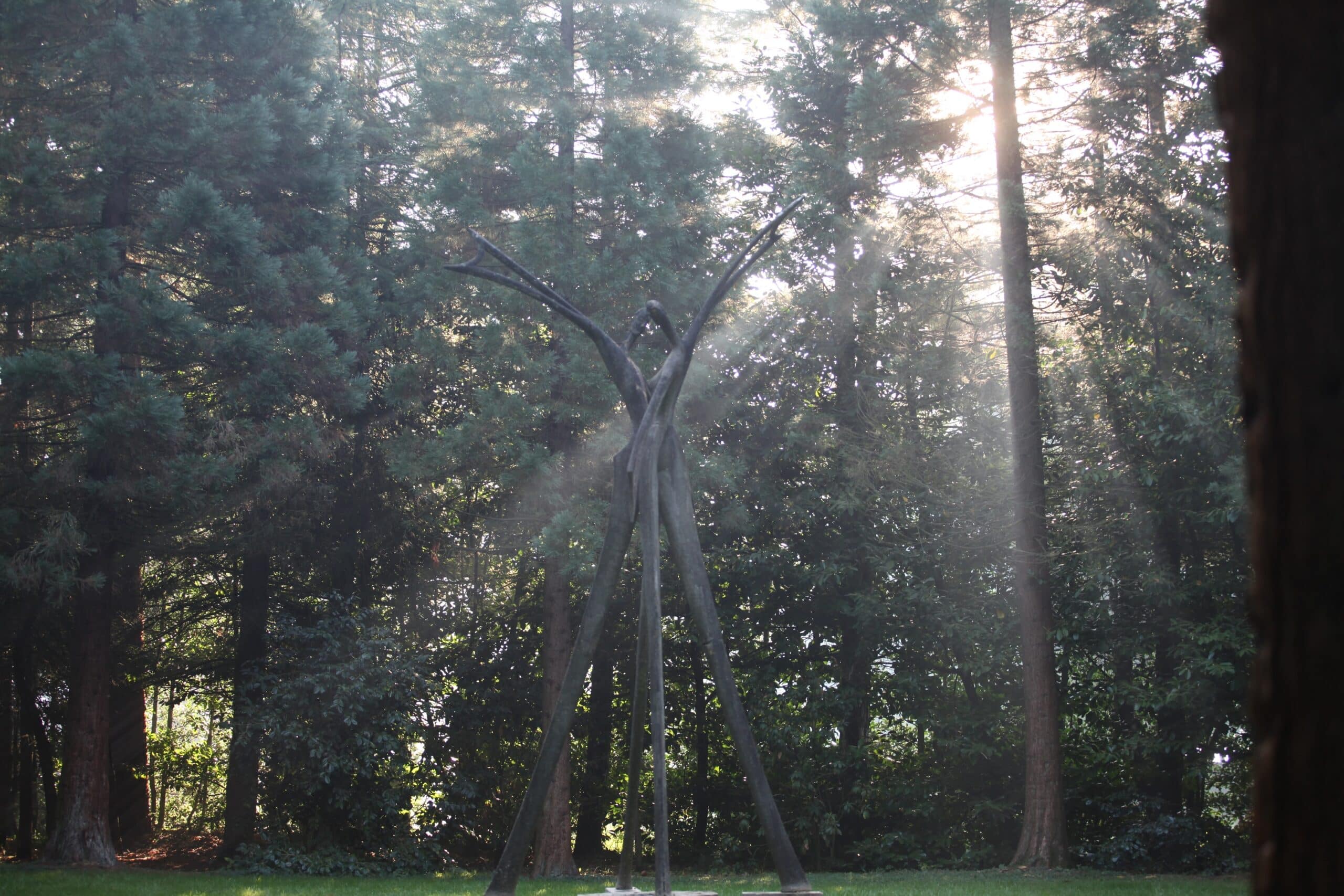
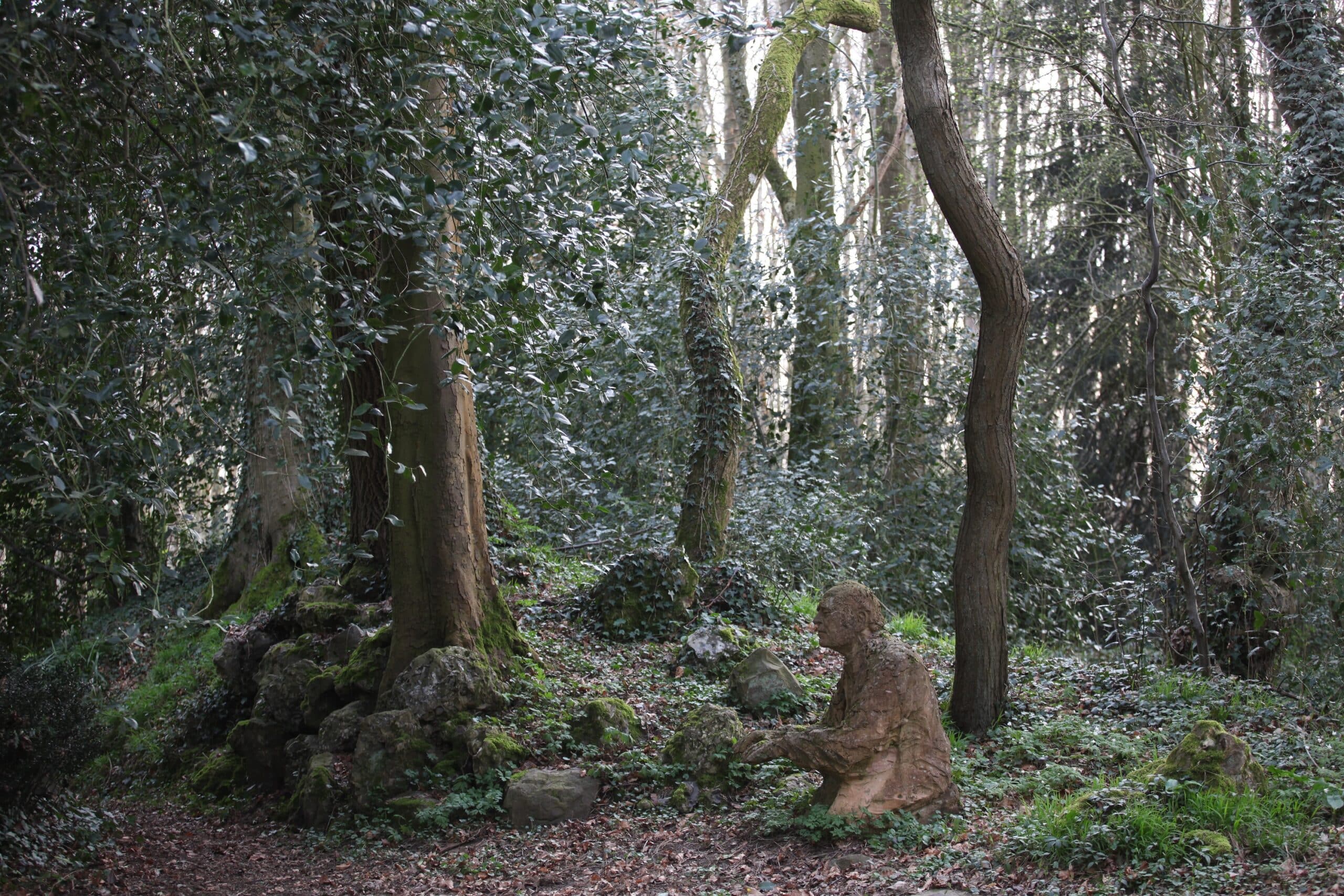
At the end of the walk, we are invited to cross the lawn at the back of the castle to discover a space with forest scents, with beautiful trees, a blue Atlas cedar, a Lebanese cedar, redwood sequoias. . Sixteen redwood giganteums stand next. Planted in a circle. They form a breakthrough towards the sky. At its center, Aeolus celebrates the winds and on the ground, the compass rose indicates the direction of the clouds crossing the high crown formed at the top of the trees. A little further, in the rockery, old trees and the interior piano, homage to Miguel Angel Estrella


